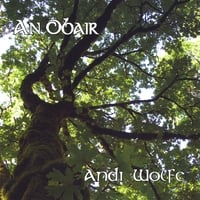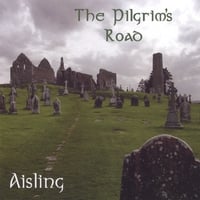
These first three images were taken just outside the Lake Yale site for the woodturning symposium. There was a small flock of Sandhill Cranes in a large field. I'd never seen these birds before, so they were another new one for my list.

They're larger than I had expected. I tried to walk slowly to get close to them, but they spooked when I got within 100 feet.

Their wingspans are very long and they look like small planes running along for a take-off.

At Merritt Island Wildlife Refuge, the first bird I saw was also a lifer. This is a Tricolor Heron, the first of many that I saw that afternoon. They're much smaller than a great blue heron, but larger than the Little Blue Heron, which I saw a little later on.

We turned onto the road for Black Point Wildlife Drive and immediately saw another Tricolor Heron.

A Great Egret was nearby. The density of fishing birds is very high throughout the refuge so the fisheries must be very robust. All the birds I saw here were busy hunting and eating.

White Ibis were in great abundance - another new species for me to see.

Here's the Little Blue Heron, and it's such a pretty bird. It's about half the size of a Great Blue Heron, and the coloring is a beautiful smokey blue. The head and neck have a maroon tinge to the plumage. The beak is blue-grey.

It's a little smaller than the white ibis.

Hunting is nearly a full-time occupation with these birds.

There must be a lot to eat in these marshy ponds. I've never before seen so many predatory birds in one place.

This is a snowy egret - much, much smaller than the great egret, but larger than the cattle egrets. I saw some cattle egrets on the drive over to the refuge, but I didn't stop to take any pictures.
 The snowy egret reminds me of the Little Egret I saw in South Africa last fall. You can do a comparison by going to my post from October 2006 (Penguins and Tidepools). There are a lot of cool bird pics on that post, too. The Snowy Egret and the Little Egret both have the yellow feet and black legs. The size is similar. The yellow lore on the Snowy Egret seems a bit brighter than the one on the Little Egret, though.
The snowy egret reminds me of the Little Egret I saw in South Africa last fall. You can do a comparison by going to my post from October 2006 (Penguins and Tidepools). There are a lot of cool bird pics on that post, too. The Snowy Egret and the Little Egret both have the yellow feet and black legs. The size is similar. The yellow lore on the Snowy Egret seems a bit brighter than the one on the Little Egret, though.
The brownish looking ibis is a juvenille White Ibis. I suspect its parent is nearby.

This is a poor photo (severely backlit) of a Glossy Ibis - another new species for me. I've seen several different kinds of ibis in South Africa, but none of them were wading birds. They all seemed to specialize on gleaning insects in grassy areas.

The wildlife refuge is full of American Coot. I know I've seen these in Oregon while I was growing up there, but it's the first sighting since I started keeping a list.

Here is an Anhinga swimming. I posted pictures of this bird as it was perching on my post about the 2007 Florida Woodturning Symposium. Someone on Woodcentral told me that this bird has no oil in its feathers and that's the reason it swims like this. I'll have to do some research to find out more about it.

This is a cute little Pie-billed Grebe. I just love their petite size and expressive faces. Another new one for the list.

Here's the coolest sighting of the day, though. There was a small flock of Roseate Spoonbills. I've always wanted to see these in real life, and here they are! The lighting was incredible and it was a real pleasure to spend some time looking at these magnificant birds.

They're slightly smaller than flamingos.

The bald head and very strange beak give them a very primitive appearance.

Recent scientific research has shown that birds are feathered dinosaurs. When you see a bird like this, you can picture what some of the dinosaurs must have looked like.

The mudflats were full of sandpiper-like birds. This is a Greater Yellowlegs. I saw some of these up in Nova Scotia last summer.

Some new ducks for my list. This is a pair of Blue Winged Teal.

Another one for my list - a Northern Pintail.

And another one - the birds at the top of the picture are Mottled Ducks.

A Least Sandpiper - I've seen these at the OSU Wetlands during the summer months.

Dunlins! Another new one for the list. I like the concentric circles from where they're probing the mud with their beaks.

Sandpipers can be pretty challenging to identify, but the ones I saw here all seemed pretty straightforward to match up with my Sibley's field guide.

Now, this is just too easy. This great egret was not shy at all and flew right into the middle of this group of people who took advantage of the photo-op.

He was heading for the pond where the Northern Pintail and Mottled Ducks were.

I would have liked to have had proper shoes for walking out nearer to the flats to take some better pictures of the shore birds. I'm sure there were more new species to see out there.

If I were a serious photographer, I'd be using a tripod for all of my bird pictures. However, I'm just an enthusiastic naturalist type and I primarily snap photos to help me with identification. I do get lucky from time-to-time, though.

With the late afternoon sun, it's not hard to find beautiful scenes to photograph.

Common Moorhens are chasing off an American Coot here. These birds belong to the Rail family and they're close relatives.

Peace is restored after the coot swims away from the moorhen's territory.

Blue winged teals settling in for the night. It seems a little risky to me for them to sleep right next to the water. The refuge is also full of alligators.

Another White Ibis.

It seemed liked this group of American Coot were heading home to a barn. They were all swimming off to places unknown just before sunset.

This Wood Stork was the most entertaining bird I saw at the refuge. It's another new one for my list. It has an elaborate foraging behavior. It puts out its left wing and stirs the sediment with its left foot.

Then it takes a step and does the same thing on the right side. After a few dance steps like this it usually scores a bite of something to eat.

Now, that's a face only a mother could love.

Yep - looks like a feathered dinosaur to me.

This is the first alligator I've ever seen in the wild. It wasn't a very big one - maybe four or five feet long at most.

The play of the light off the water at dusk combined with these intense eyes was pretty cool.

"Come to me, my little chickadee. . ." More likely, ducks, storks, ibis, spoonbills, egrets, herons, etc. I'm sure these critters are well fed, too. I learned that alligators are very active at night, which makes sense from a hunting point-of-view.

Spoonbills roost in the mangrove trees. That would put them out of reach of the gators.

Here's a common moorhen up in the tree, too. I've also seen herons and egrets roosting in trees. I always thought that was strange, but, in this environment, it makes a lot of sense.

The light was fading bigtime by the time I took this picture. I used a telephoto lens and a flash to capture these images of the roosting birds.

The Florida sunsets can be very beautiful. This one was pretty nice. As I was taking this photo, a flock of birds flew across the sunset.

Here's a closer view. This summarizes the pleasant afternoon I spent in the reserve.

The colors were incredible - this was an image capture with my telephoto lens.

As I was processing my images, I noticed that I had actually photographed a couple of alligators coming out for the evening.

Beautiful, eh?

As the sun set, I noticed this cloud formation was in the shape of a flying heron. Now, that's just too cool!

The colors were amazing.
.jpg)
Here's a panoroma taken early in the sunset. You'll have to click on it to bring up the full size.

Here's a later image. Steve, my nice hubby, used his panorama stitching software to compile these from several images taken in quick succession.











2 comments:
Andi,
If you ever find yourself in the Tallahassee area (we local woodturners should be so lucky) you would enjoy a trip to the St. Mark's Wildlife Refuge. It's a marvelous place and birders come from all over the country. I had a bald eagle fly across the road no more than 50 feet in front of me. He was carrying a frshly caught bass.
lovely photos.
only ever seen two common cranes
Post a Comment